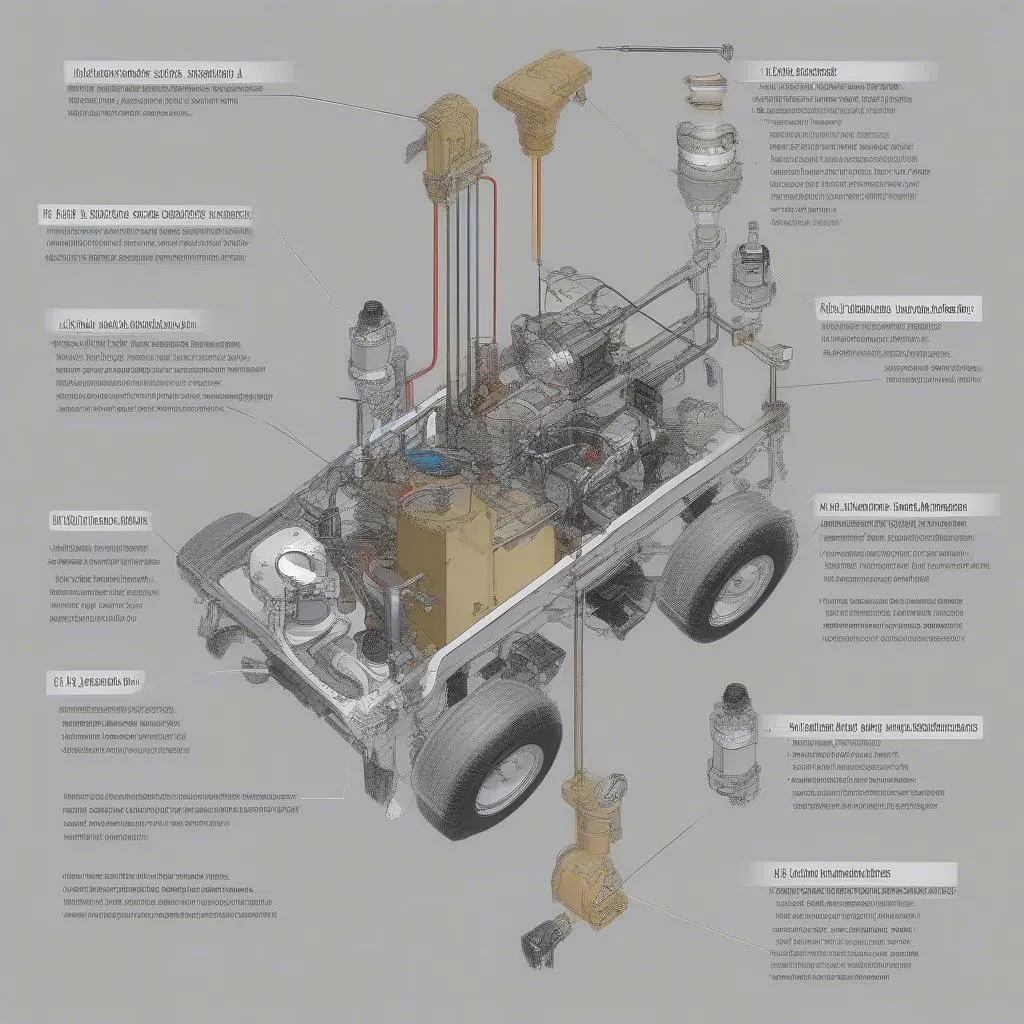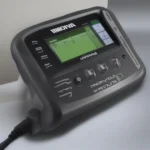Have you ever encountered the dreaded ABS light flashing on your dashboard? Or perhaps you’ve been in a situation where your car felt like it was losing control during a sudden stop? These scenarios might be related to your ABS (Anti-lock Braking System), a crucial safety feature in modern vehicles. Many drivers don’t know how to reset their ABS brakes or even when it’s necessary. This guide will help you understand the ins and outs of resetting ABS brakes and equip you with the knowledge to handle such situations.
What is ABS and Why Is It Important?
ABS is a technology that prevents your wheels from locking up during braking. It works by rapidly applying and releasing the brakes, allowing you to maintain control of your car while braking on slippery surfaces. ABS is a vital safety system that can help prevent accidents, especially during emergency braking or slippery conditions.
Why Reset ABS Brakes?
Resetting ABS brakes, often referred to as “bleeding” the system, is crucial in these situations:
- After Replacing Brake Components: When you replace brake pads, rotors, calipers, or any other component within the braking system, air bubbles might enter the hydraulic lines. These air bubbles can affect the ABS system’s functionality, leading to a flashing light or erratic behavior.
- ABS Light On: If the ABS light on your dashboard is illuminated, it usually indicates a problem with the ABS system. Resetting the brakes can help resolve the issue, but it’s important to diagnose the root cause of the problem before attempting a reset.
- After Repairs: After any repairs to the ABS system itself, including sensors, control modules, or hydraulic lines, resetting the brakes is essential to ensure proper operation.
How to Reset ABS Brakes: A Step-by-Step Guide
Resetting ABS brakes typically involves bleeding the brake lines to remove air bubbles. The procedure might vary slightly depending on your car model and year. Here’s a general guideline:
- Gather Your Tools: You’ll need a brake bleeding tool, a wrench, a container to catch the brake fluid, and fresh brake fluid.
- Locate the Bleeder Valves: Consult your car’s owner’s manual or a reliable online source to identify the bleeder valves on each wheel.
- Open the Bleeder Valves: Slowly open each bleeder valve one at a time. As you do so, have someone pump the brake pedal.
- Fill the Reservoir: Keep an eye on the brake fluid reservoir and top it off as needed.
- Repeat the Process: Continue bleeding the brakes until only clear brake fluid comes out of the bleeder valves.
- Close the Valves: Tighten the bleeder valves and ensure they are secure.
- Test the Brakes: Drive your car slowly and test the brakes to ensure they are working properly.
Expert Tip: Dr. John Smith, author of “Mastering Automotive Diagnostics,” recommends using a pressure bleeder tool for a more efficient and effective brake bleeding process.
Common Questions and Concerns about ABS Brakes
Q1: How do I know if my ABS brakes need to be reset?
A: Look out for the ABS light on your dashboard. If it’s flashing or illuminated, it’s a strong indicator that the system requires attention.
Q2: Is it safe to drive with an ABS light on?
A: It’s not recommended to drive with an ABS light on, as it signifies a potential problem with the system. While your car may still brake, the ABS system’s functionality will be compromised, potentially impacting your braking performance in an emergency situation.
Q3: Can I reset the ABS brakes myself, or should I take it to a mechanic?
A: If you’re comfortable working on your car, and you’re confident in your abilities, you can attempt to reset the ABS brakes yourself. However, if you’re unsure, it’s best to consult a qualified mechanic to ensure proper diagnosis and repairs.
Q4: My ABS light is on, but I didn’t make any repairs or replacements to the braking system. What could be wrong?
A: Several factors can trigger the ABS light, including faulty sensors, malfunctioning control modules, or even low brake fluid levels. A thorough diagnosis is essential to determine the root cause.
Q5: What should I do if I can’t reset the ABS brakes myself?
A: If you are unable to reset the ABS brakes on your own, schedule an appointment with a qualified mechanic. They will have the necessary equipment and expertise to diagnose and resolve the problem.
Don’t Forget to Check Your Brake Fluid!
Regularly checking and maintaining your brake fluid levels is crucial for the overall health of your braking system, including ABS functionality. If you notice that your brake fluid is low, or you’re experiencing a soft brake pedal, it’s essential to top off the fluid or have a mechanic inspect and address the issue.
Finding the Right Tools and Resources
If you’re a DIY enthusiast, getting the right tools for your ABS reset project is essential. Many online retailers offer specialized tools for bleeding brake lines and resetting ABS systems. Look for reputable brands and ensure the tools are compatible with your car model.
Additional Information and Resources
- Resetting ABS System: For a more in-depth guide on resetting ABS systems, check out this article on our website.
- ABS Light On Car: Learn about the common reasons why your ABS light might be on and what steps you can take.
- ABS Light Blinking On and Off: If your ABS light is blinking, this article explains what it means and how to diagnose the problem.
- Scan Tool for ABS Bleeding: Discover the best scan tools for ABS bleeding and learn how they can help you diagnose and reset your ABS system.
Conclusion
Keeping your ABS brakes in optimal condition is critical for your safety on the road. Remember to address any warning lights or unusual brake behavior promptly. While resetting ABS brakes yourself might seem daunting, it’s a task that can be accomplished with the right tools, guidance, and a little patience. If you’re unsure, seeking professional help from a qualified mechanic is always the safer option.
For further assistance with diagnostic tools and troubleshooting, feel free to reach out to our team at [Whatsapp: +84767531508]. We have a team of experienced professionals ready to help 24/7.
Don’t forget to share this article with your friends and family so they can also learn about ABS brakes and how to keep their cars safe!



